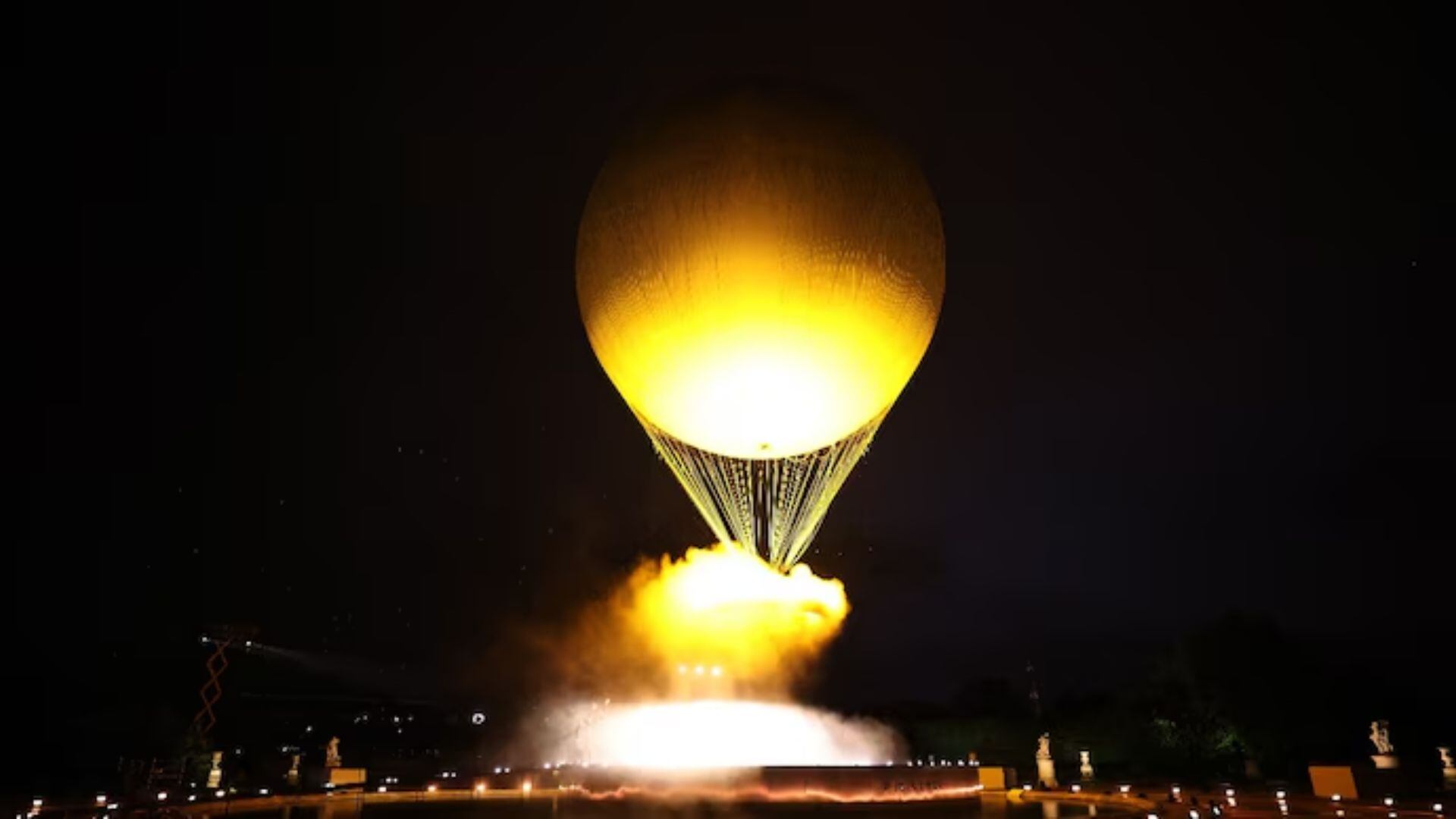
The scene was so visually striking that even the sparkling Eiffel Tower had to compete for attention on Friday night. On Saturday, a day after the Opening Ceremony on the River Seine, tourists strolled past the Louvre and Place de la Concorde as if they were just ordinary landmarks.
A new attraction has emerged in the city. Nestled between the museum and the historic square, the centuries-old Jardin des Tuileries has long been a tranquil escape from the more renowned tourist spots. However, this will change for the next fortnight.
The garden will host a hot-air balloon holding the Olympic cauldron, which made a breathtaking debut flight across the Paris sky on Friday night, concluding the opening ceremony spectacularly.
Every evening, from sunset until 2 am, the brightly lit cauldron will hover 60 meters above the garden. During the day, 10,000 free tickets will be available to get close to the ceremony’s centerpiece, situated near the Louvre Museum’s glass pyramid. This marks the first cauldron in Olympic history to be illuminated without fossil fuels, relying instead on water and electric light.
With a diameter of seven meters, the balloon’s base features 40 LED lights that illuminate a cloud of water vapor generated by 200 high-pressure misting nozzles, creating the effect of flickering flames and smoke. Electricity and water are supplied from the ground to the airborne balloon.
Designer Mathieu Lehanneur, celebrated as an “inescapable figure of French design” and chosen for his “poetic approach” and “symbolic force,” aimed to create something unprecedented in Olympic history.
Tony Estanguet, the chief of the Paris 2024 organizing committee, stated that the cauldron serves two purposes: to amaze people and to highlight their commitment to a low-carbon Olympics. He described it as “one of the main symbols of the Games.”
“We wanted the cauldron to use a new technology in order to not produce too many emissions. We were ambitious and we wanted to bring together something spectacular and environmental responsibility at the same time,” Estanguet told the Associated Press.
In the days leading up to the July 26 ceremony, anticipation around the “mysterious balloon” had been growing across the city. Following its initial flight during Friday’s opening, where it soared up to 1,000 meters, illuminating the night Parisian sky, excitement has only increased.
Held along the River Seine, the ceremony—hosted for the first time outside a stadium—was filled with moments of awe and surprise. Yet, the lighting of the cauldron, as tradition dictates, was one of the most thrilling and intricately choreographed segments.
The entire four-hour show built up to the finale, which, like other elements of the ceremony, paid homage to French cultural aspects.
A hooded, masked torchbearer, performing parkour over the architectural marvels along the river, was a highlight.
This masked figure paid tribute to Assassin’s Creed, the popular video game developed by a French company. One installment of the game is set in Paris, and the creators have donated $500,000 towards the rebuilding of Notre Dame.
A torchbearer ran atop the Musee d’Orsay in Paris during the opening ceremony of the 2024 Summer Olympics on Friday, July 26, 2024. (AP/PTI)
The character also referenced famous French figures, including the Man in the Iron Mask, the Phantom of the Opera, Belphegor, and the “gentleman thief” Arsene Lupin.
Starting from the Musee d’Orsay, the torchbearer sprinted along the Pont Neuf bridge, rode a boat with a child holding the flame, and cartwheeled down a runway.
The torchbearer carried the flame to the Eiffel Tower, where it was expected to be lit. Traditionally, the flame is positioned near one of the main venues. However, France decided to do things differently.
In a dramatic twist, the torch made a return journey on the boat. The climactic lighting of the cauldron began with Charles Coste, the oldest living French Olympian at 100 years old, passing the torch to host nation athletes Marie Josée Pérec and Tony Riner for the final act.
As they lit the flame, the cauldron ascended in a hot air balloon, paying homage to the first manned flight in a hydrogen-filled gas balloon by the Montgolfier brothers in 1783 at the same location.
During the day, the cauldron will remain tethered in the garden. But at night, it will rise into the air, illuminating the sky of the City of Lights.













